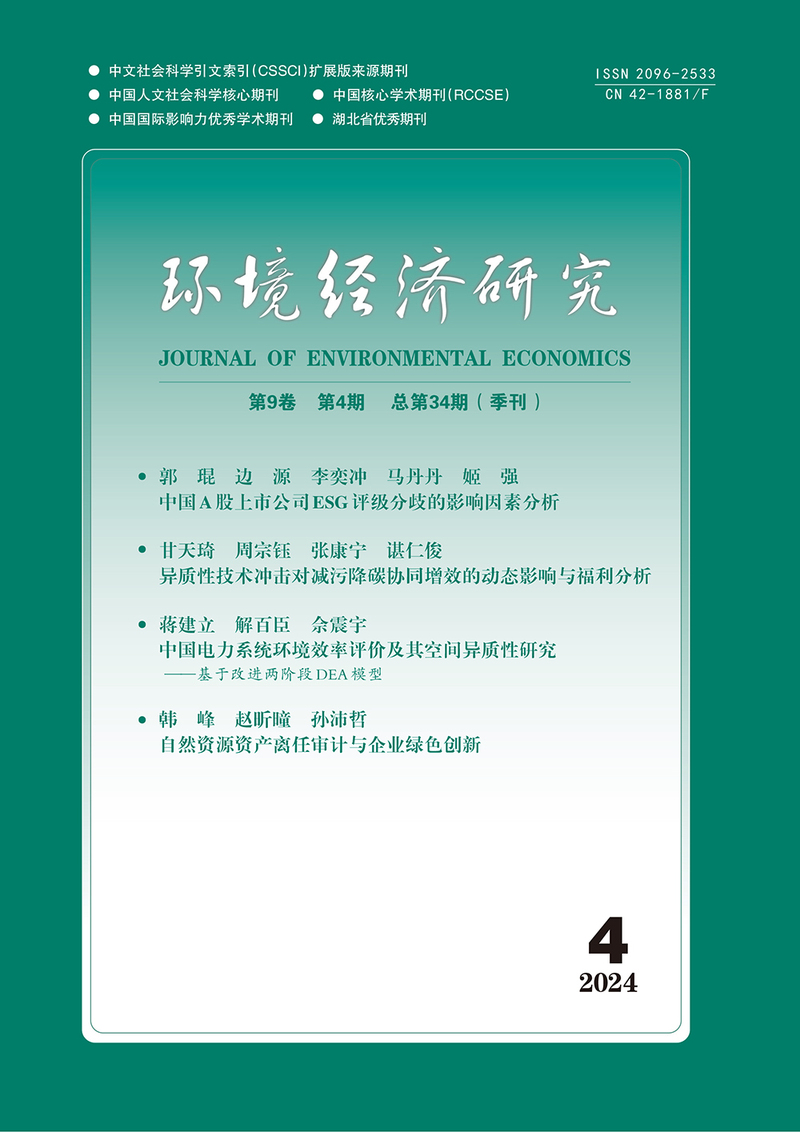摘要:有效推动生产性服务业和工业空间协同集聚是实现区域协调治理和环境可持续发展的重要途径。本文构造出考虑上下游投入产出关联的空间协同集聚指数,并使用城市碳排放数据以及改进山脉指数和地理中心度两个工具变量,实证检验 了生产性服务业与工业空间协同集聚对工业碳排放的影响及其作用机制。研究结 果表明:生产性服务业和工业空间协同集聚与工业碳排放呈现为倒“U”型关系,在进行一系列稳健性检验以及使用工具变量解决内生性问题后,此结论仍然成立;机制分析表明,生产性服务业与工业空间协同集聚通过优化要素配置实现了降低要素错配、提升技术创新和推动工业升级对工业碳排放产生影响,并且空间协同集聚也是现有碳减排政策发挥效用的关键路径;基于适宜性空间协同集聚视角的进一步分析表明,推动高端生产性服务业专业化发展,低端生产性服务业多样化发展的模式能够释放出空间协同集聚的减排潜力;同时,扩大对外开放和推动市场化改革、实现政府职能转变是未来通过产业空间协同集聚实现工业碳减排的重要抓手。本文丰富了产业空间协同集聚与碳排放的相关文献,为在新发展格局下通过协调生产性服务业和工业发展实现“3060”目标提供有益借鉴。
关键词:空间协同集聚;工业碳减排;投入产出关联;适宜性空间协同集聚
Spatial Collaborative Agglomeration of Productive Services and Industry and Its Impact on Industrial Carbon Emissions in China
Sun Pengbo, Ge Liming, Yang Chen
Abstract: The effective promotion of spatial collaborative agglomeration of productive services and industry is animportant way to achieve coordinated regional governance and sustainable environmental development. This paperconstructs a spatial collaborative agglomeration index that takes into account upstream and downstream input-outputlinkages, and empirically examines the impact of collaborative agglomeration between productive services and industry on industrial carbon emissions and its influence mechanisms by using urban carbon emissions data and the improved mountain index and egocentricity as instrumental variables. The results show that the spatial collaborative agglomeration of productive services and industry has an inverted U-shaped relationship with industrial carbon emissions, and this conclusion still holds after a series of robustness tests and the use of instrumental variables to solve the endogeneity problem. Further analysis based on the perspective of suitable spatial collaborative agglomeration shows that the model of promoting the specialization of high-end productive services and the diversification of low-end productive services can unlock the benefits of spatial agglomeration. At the same time, expanding the opening up of thecountry to the outside world, promoting market-oriented reforms and transforming government functions are importanttools for achieving industrial carbon emission reduction through spatial collaborative agglomeration in the future. Thispaper enriches the literature on industrial spatial collaborative agglomeration and carbon emissions, and provides auseful reference for achieving the“3060”target by coordinating the development of productive services and industryin the new development pattern.
Keywords: Spatial Collaborative Agglomeration; Industrial Carbon Reduction; Input-output Linkage; Suitability-based Spatial Collaborative Agglomeration
全文:![]() 生产性服务业和工业空间协同集聚对中国工业碳排放的影响.pdf
生产性服务业和工业空间协同集聚对中国工业碳排放的影响.pdf
